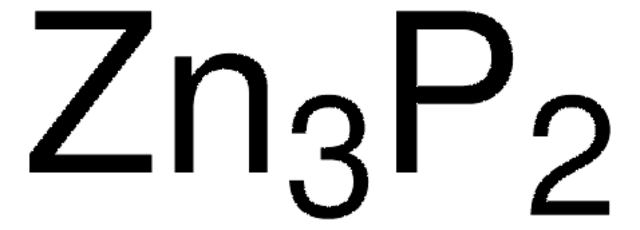All Photos(2)
About This Item
Linear Formula:
ZnO
CAS Number:
Molecular Weight:
81.39
EC Number:
MDL number:
UNSPSC Code:
12352303
eCl@ss:
38150402
PubChem Substance ID:
NACRES:
NA.23
Recommended Products
Assay
99.999% trace metals basis
form
powder
SMILES string
O=[Zn]
InChI
1S/O.Zn
InChI key
XLOMVQKBTHCTTD-UHFFFAOYSA-N
Looking for similar products? Visit Product Comparison Guide
Related Categories
General description
ZnO is a semiconductor with a wide band gap. Point defects in the structure define the electrical conductivity of the oxide. Doping these point defects with Al, In and Ga gives in a highly conductive n –type zinc oxide. Defect free ZnO can also be achieved by annealing the oxide in reducing environment. It also exhibits excellent optical transmission properties. Doped ZnO can form transparent conductors which may be useful in various energy-based applications.1
Application
Zinc oxide was added to the diet of piglets to enhance their growth performance and health.
Employed in the preparation of NaZnSiO3OH, a novel chiral framework material which has potential application in ion exchange, adsorption or catalysis.
Signal Word
Warning
Hazard Statements
Precautionary Statements
Hazard Classifications
Aquatic Acute 1 - Aquatic Chronic 1
Storage Class Code
11 - Combustible Solids
WGK
WGK 2
Flash Point(F)
Not applicable
Flash Point(C)
Not applicable
Personal Protective Equipment
dust mask type N95 (US), Eyeshields, Gloves
Choose from one of the most recent versions:
Already Own This Product?
Find documentation for the products that you have recently purchased in the Document Library.
Customers Also Viewed
The Zinc Concentration in the Diet and the Length of the Feeding Period Affect the Methylation Status of the ZIP4 Zinc Transporter Gene in Piglets
Karweina D, et al.
PLoS ONE, 10(11), e0143098-e0143098 (2015)
A. M. Healey et al.
Inorganic chemistry, 38(3), 455-458 (2001-10-25)
The structure of NaZnSiO(3)OH, synthesized hydrothermally by reaction of Na(2)ZnSiO(4) and NaOH, has been determined from single-crystal X-ray and powder neutron diffraction data (orthorhombic, space group P2(1)2(1)2(1,) a = 7.6872(2) Å, b = 9.3899(2) Å, c = 5.155(1) Å, Z
Kwang Gug Yim et al.
Journal of nanoscience and nanotechnology, 13(5), 3586-3590 (2013-07-19)
ZnO nanostructures were grown on Si (111) substrates by a hydrothermal method. Prior to growing the ZnO nanostructures, ZnO seed layers with different post-heat temperatures were prepared by a spin-coating process. Then, the ZnO nanostructures were annealed at 500 degrees
Xiaolong Li et al.
Journal of nanoscience and nanotechnology, 13(8), 5859-5863 (2013-07-26)
In this study, we present the synthesis of ZnO nanowire by hydrothermal process through reutilization of sludge from soy sauce wastewater electrochemical treatment. The influences of floc content and caramel pigment concentration on the morphologies of ZnO were studied. The
Hyeong Pil Kim et al.
Journal of nanoscience and nanotechnology, 13(7), 5142-5147 (2013-08-02)
Solution processed cathode organic photovoltaic cells (OPVs) utilizing thin layer of ZnO with 27% increase in power conversion efficiency (PCE) to control devices have been demonstrated. Devices without the presence of ZnO layer have much lower PCE than the ones
Articles
An article concerning self-propagating reactions induced by mechanical alloying, presented by Sigma-Aldrich.com.
Our team of scientists has experience in all areas of research including Life Science, Material Science, Chemical Synthesis, Chromatography, Analytical and many others.
Contact Technical Service







